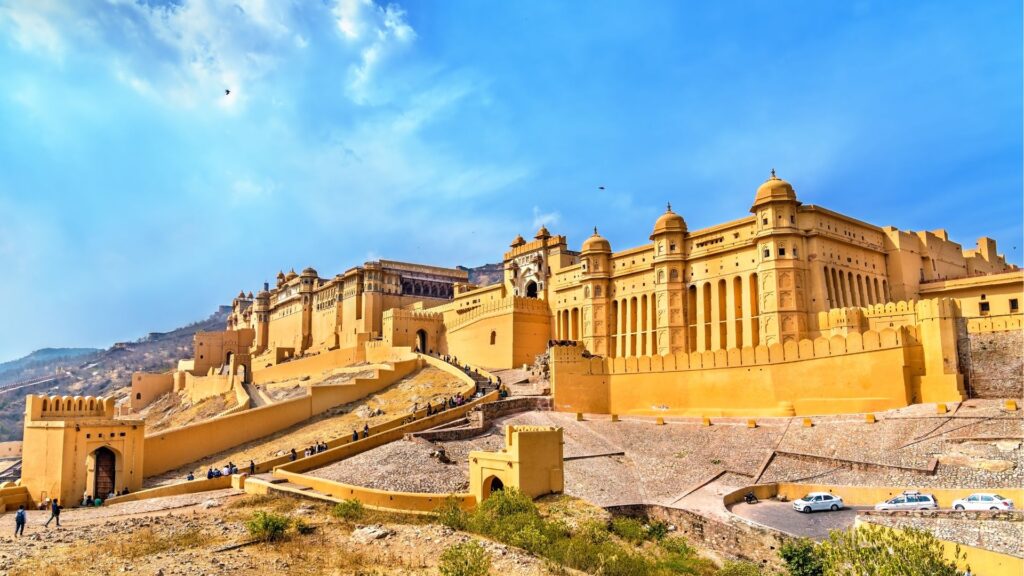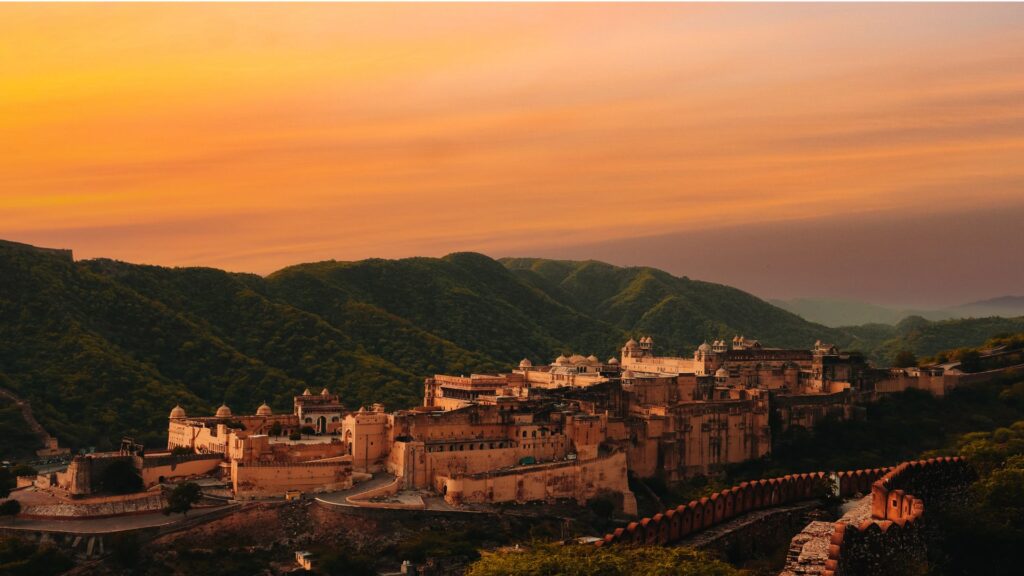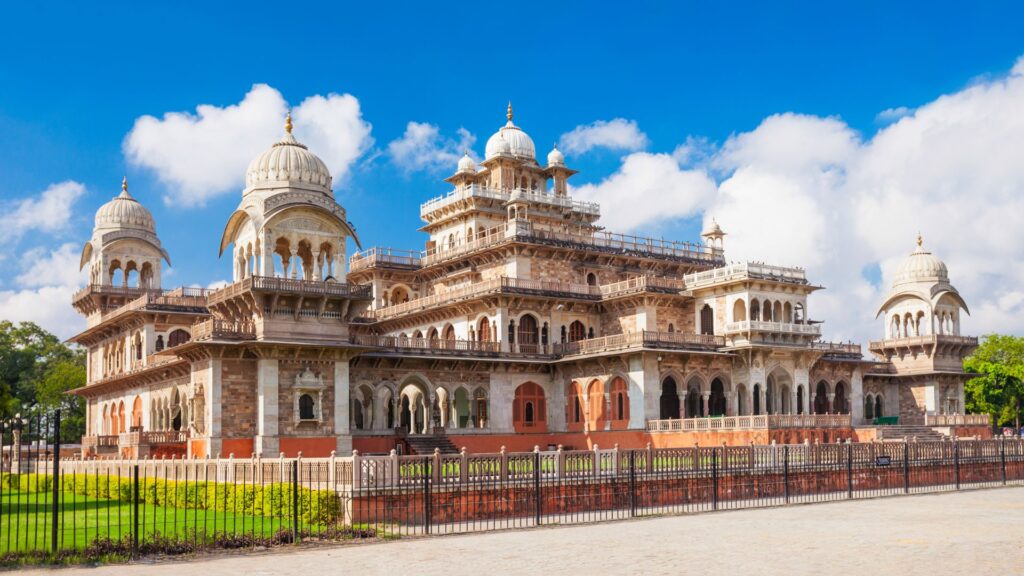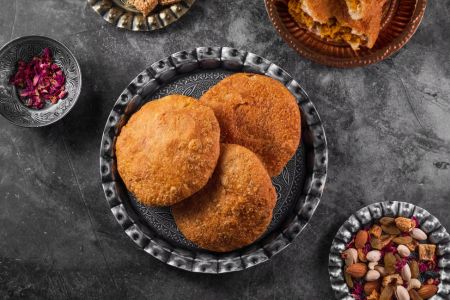Jaipur







Vibe Check – What Jaipur Feels Like
Step into Jaipur and you instantly understand why it’s called the Pink City. The walls, gates, and bazaars glow in a warm salmon hue that somehow makes chaos feel charming. Scooters weave between camel carts, bazaars spill over with colors that put Pantone charts to shame, and palace silhouettes pop against desert skies.
But Jaipur isn’t just pink—it’s layered. Royal palaces and grand forts on one side, artisanal workshops and street food vendors on the other. It’s cosmopolitan yet traditional, where luxury hotels stand next to centuries-old stepwells. The vibe? A city strutting confidently in vintage couture while checking its notifications on the latest iPhone.
Hidden Histories – Why It’s Pink
Jaipur was founded in 1727 by Maharaja Sawai Jai Singh II, a king who combined astronomy geekiness with urban planning flair. He laid out the city on a grid—a first for India—turning Jaipur into one of the earliest planned cities. The pink came later: in 1876, the city was painted terracotta to welcome Prince Albert, Queen Victoria’s husband. Locals loved it, the color stuck, and now it’s law—every building in the old city must maintain the pink.
But there’s more than paint here. The Jantar Mantar, Jai Singh’s observatory, is full of giant astronomical instruments, some bigger than houses. They look like modern art installations but were once used to track planets with shocking accuracy. Proof that Jaipur has always been equal parts beauty and brains.
Experiences & Oddities – Jaipur After Hours





Ready to plan your adventure?
Whatever you want from your trip, our team of expert travel designers are ready to help.
Where to Wander – Beyond the Postcards

Hawa Mahal
That honeycomb façade with 953 windows is Jaipur’s most iconic photo op. Built for royal women to watch street life unseen, it’s basically history’s classiest one-way mirror.

City Palace

Nahargarh Fort
Perched on a ridge, offering the best sunset view of Jaipur sprawling below. At night, the fort hosts rooftop cafés where the city glitters like spilled jewels.

Panna Meena ka Kund
Geometric perfection in stone. Lesser known, but Instagram catnip. Locals once used it as a swimming pool; now travelers use it as a backdrop.
Food & Flavors – Where Spice Meets Sweet
Jaipur food is the perfect mix of fiery Rajasthani staples and indulgent sweets. Skip hotel buffets—real flavor is on the streets.

Dal Baati Churma
Wheat dough balls dipped in ghee, smashed into lentils, finished with sweet churma. Equal parts survival food and feast dish.

Pyaaz Kachori
A Jaipur breakfast legend—flaky pastry stuffed with spiced onion, served hot from roadside stalls.

Ghewar
A disc-shaped sweet soaked in syrup, topped with rabri, and usually eaten during Teej festival. Sticky, messy, divine.

Kulhad Lassi at Lassiwala
Creamy yogurt drink served in clay cups, so thick you could almost eat it with a spoon.

Rajasthani Thali
For the indecisive. Multiple curries, rotis, sweets, and pickles that leave you both stuffed and grateful.
The Soul of Jaipur – Between Heritage and Hustle
Jaipur’s magic lies in its balance. It’s royal without being stiff, modern without erasing tradition. You’ll watch artisans hand-carve bangles the same way their ancestors did, then see their kids coding apps in cafés. You’ll explore centuries-old palaces in the day, then shop at malls blasting Bollywood at night.
And at its heart, Jaipur still feels like a city that wants to welcome you. Shopkeepers press sweets into your hand “just to taste,” drivers double as storytellers, and strangers at chai stalls happily share directions, gossip, and advice. Jaipur isn’t just pink—it’s warm.

Best Seasons & Smart Hacks

Best Time
October to March. Winter evenings are perfect for fort walks and shopping. Summers? Brutal—avoid unless you thrive in 45°C heat.

Festival Hack
Visit during the Jaipur Literature Festival (January) for a mix of writers, celebrities, and cultural buzz. Or during Teej (July–August) to see the city in monsoon celebrations.

Stay Hack
Boutique havelis in the old city offer atmosphere at great prices. For luxury, the Rambagh Palace (a former royal residence) is where actual maharajas once lived.

Commute Hack
Use e-rickshaws within the old city—cheap, non-polluting, and they squeeze through lanes cars can’t.
Explore the rich cultural and historical heritage of India with this 4-day, 3-night tour covering iconic landmarks and monuments in the renowned cities of Delhi, Agra, and Jaipur.
- Golden Triangle Tour
This 10-night, 11-day tour gives you a chance to experience the real charm of Rajasthan by visiting its major cities like Udaipur, Jodhpur, Jaisalmer, Bikaner, Nawalgarh, and Jaipur
- Best of Rajasthan
This 18-day heritage tour takes you through Rajasthan’s stunning forts and palaces, highlighting the state’s rich and colorful architecture
- Forts of Rajasthan
Why book with Godawan Getaways

Personalised design
We’ll plan your trip around your personal interests, tastes and preferences, providing honest advice based on first-hand knowledge.

Authentic experiences

Positive Impact
We seek out unforgettable experiences that benefit both local communities and the environment.
Testimonials
What Client's Say?



How to Reach Jaipur?
- By Train
The major railway stations of Jaipur is in Jaipur Railway Station and Gandhi Nagar Railway Station. And It is easily connected to rest of Rajasthan cities.
- By Air
The major Airports in Jaipur– Jaipur International Airport which operates both International and domestic flights. They are connected to all the major cities like Delhi, Mumbai, Bangalore, Kolkata, Ahmedabad and Thiruvananthapuram.
- By Road
Jaipur has well connected national highways and state highways. NH8 which is connected to other major cities like Delhi, Udaipur, Jaipur, Mumbai, Ahmedabad, is the easiest way to reach Jaipur.
Plan your trip to
Jaipur
Jaipur is Rajasthan’s poster child—colorful, chaotic, regal, and endlessly photogenic. But spend more than a day, and you realize it’s not just a pink city. It’s a city that pulses with every shade of hospitality, hustle, and history.

